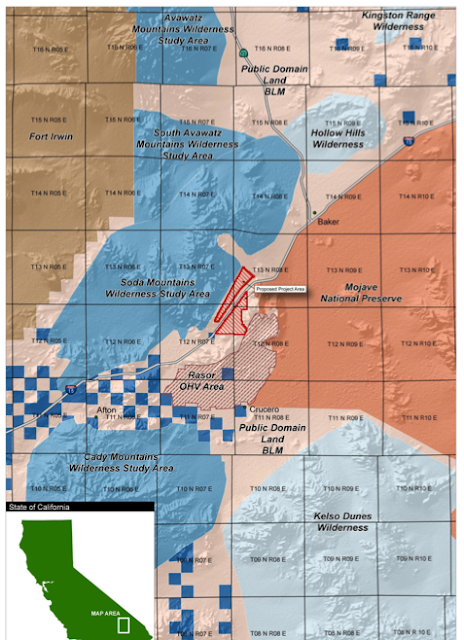Caithness Solar Threatens Heart of the Mojave Desert

A project proposed by New York-based Caithness Energy could degrade or destroy up to 6.8 square miles of public land identified by the Nature Conservancy study as "biologically core" to the health of the Mojave Desert. The Soda Mountain Solar Project would be built on pristine desert habitat--mostly creosote scrub--and would likely disrupt an essential habitat connectivity corridor. This screenshot shows the proposed project location in red, located in a valley that connects the central Mojave with wildlands to the west. Map from the BLM Plan of Development for the Caithness Soda Mountain solar project. Desert experts fear that the Bureau of Land Management's (BLM) initial review of the site does not adequately describe the importance of the area and biological resources that likely exist there. According to the BLM Plan of Development for the project obtained by Basin and Range Watch , the special status plant survey carried out for the plan of development was o...

